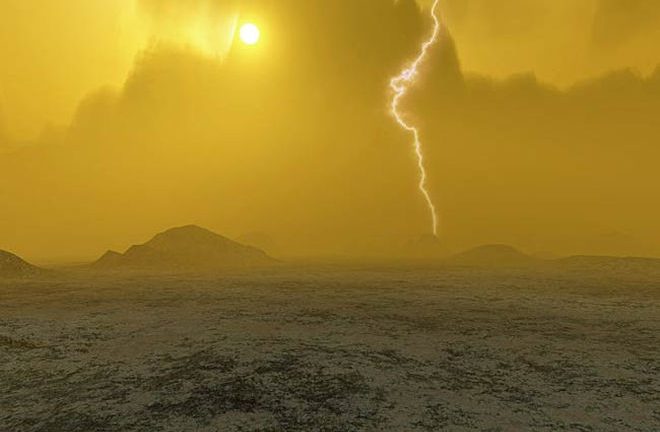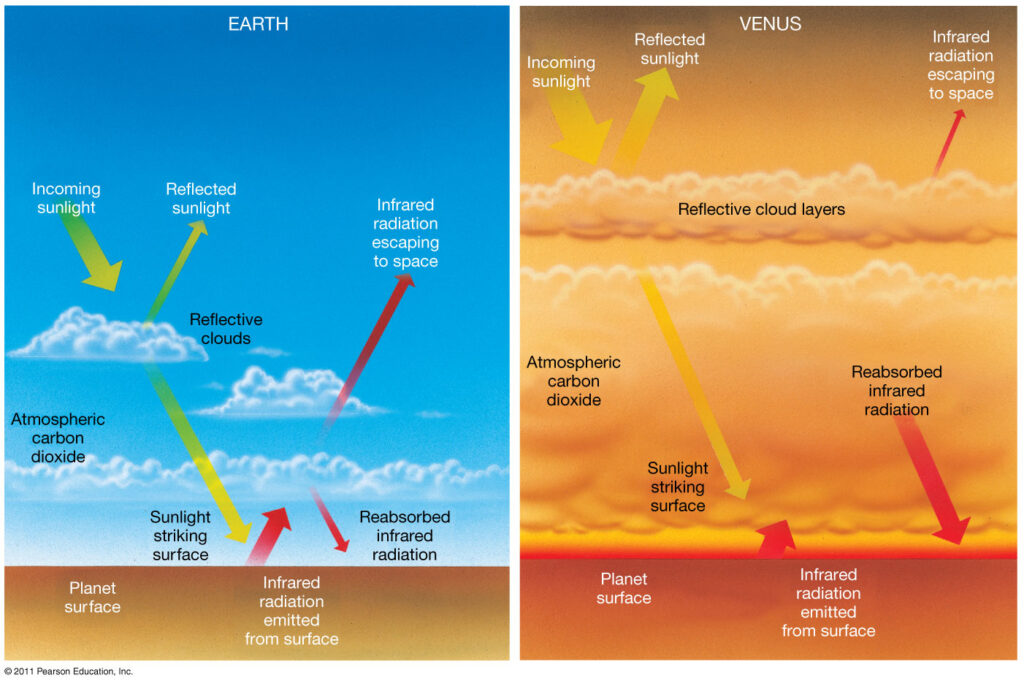It could be easier – and potentially more sustainable – to inhabit a cloud city in the dense atmosphere of Venus rather than on the dry surface of Mars. While it may sound like science fiction, the notion of building a floating city in the clouds of Venus is becoming increasingly viable. In this article, we explore the potential advantages of Venusian colonization over Mars and showcase the upcoming satellite missions that can shed new light on these possibilities.
Of the terrestrial planets in our solar system, Venus is the closest twin to Earth in diameter and mass. However, the current conditions on Venus are inhospitable for human life. Standing on the planet’s surface, you would feel slightly lighter (with ~90% of Earth’s gravity) and see a thick shroud of sulfuric clouds obscuring the dry, rocky plains before you. If the sulfuric rain didn’t ruin your day, the immense atmospheric pressure (~92x the amount felt on Earth’s surface) and heat (up to 900° F, enough to melt lead) would crush you. This daunting environment has been experienced first-hand by the 10 successful landers sent to the planet between 1967 – 1985, with the longest-lived lander transmitting data for about 110 minutes before succumbing to the immense heat and pressure. While recent research has shown that materials like high-performance plastics and ceramics could be used to construct robotic landers to withstand this harsh environment, developing a sustainable colony for humans on the surface is substantially more challenging.

Venus’s atmospheric conditions at higher altitudes (~50 kilometers) are more similar to an Earth-like gravity and pressure than on the surface. This has led some scientists to propose the concept of a cloud city that could float in Venus’s upper atmosphere. The idea of a cloud city on Venus was first proposed in 1960s science fiction novels, and since then, scientists have explored the concept in more detail. Recent advancements in science and technology have made this idea more plausible.
Designing a cloud city comes with its own set of challenges, let alone a city in an atmosphere dominated by carbon dioxide (96.5%), nitrogen (3.5%), and sulfur dioxide (150 parts per million). Since sulfuric acid is corrosive to most materials, scientists have proposed using special coatings and materials that could resist corrosion. However, this thick atmosphere also has many advantages, with the potential for harvesting and processing the abundant carbon dioxide and as a resource for infrastructure, manufacturing, and construction. Furthermore, the thick atmosphere inhibits the passage of meteoroids, reduces solar radiation, and produces wind speeds up to 220 miles/hour which could be harnessed for electrical power.

Compared to Mars, inhabiting Venus could be less expensive in time and fuel and in potential health risks. In Astronomical Units (AUs), with 1.0 AU being the distance between the Sun and the Earth, Venus is closer to the Sun at 0.7 AU, while Mars is farther away at 1.5 AU. As Venus is closer to the Sun, this makes it more fuel efficient for rockets to travel towards the Sun’s gravitational pull, and being relatively closer to Earth, the round-trip travel time to Venus is 30-50% shorter than traveling to Mars.
Even if we were to build a colony on Mars’s surface, the reduced effects of gravity (~40% of Earth’s) would have increased adverse effects on long-term habitability. For example, astronauts on the international space station with prolonged exposure to microgravity have shown 1) loss in bone mass, 2) muscle atrophy, 3) decreased plasma volume, and even 4) cardiovascular deconditioning and losing the ability to remain upright.
With renewed excitement around Venusian habitability, more and more missions are being selected to study its atmospheric and surface conditions, including…
- VERITAS (orbiter): NASA’s VERITAS (Venus Emissivity, Radio Science, InSAR, Topography, and Spectroscopy) mission, set to launch in 2028, will orbit Venus to map features and processes on the surface.
- DAVINCI (balloon): NASA’s DAVINCI (Deep Atmosphere Venus Investigation of Noble Gases, Chemistry, and Imaging) mission, set to launch in the late 2020s, will send a balloon probe on an hour-long descent through the atmosphere to take chemical measurements and high-resolution imagery of the atmosphere and surface.
- EnVision (orbiter): The European Space Agency (ESA) and NASA are collaborating on the EnVision mission, set to launch in the early 2030s, to orbit Venus gathering data on the atmosphere and the planet’s surface features and tectonics.
While the idea of a cloud city on Venus is still in development, the concept is becoming increasingly plausible as technology and material science advance. With future research missions to Venus, it may one day be possible to build a floating city in the clouds of Venus, providing a new frontier for human exploration and serving as a model for sustainable living in other extreme environments.
Peer Editor: Mark Geisler